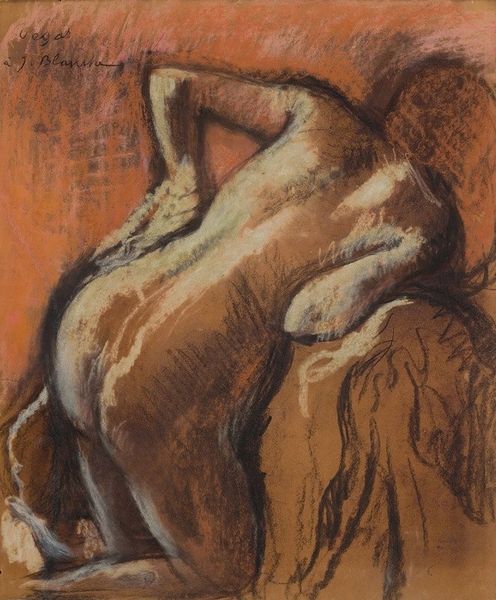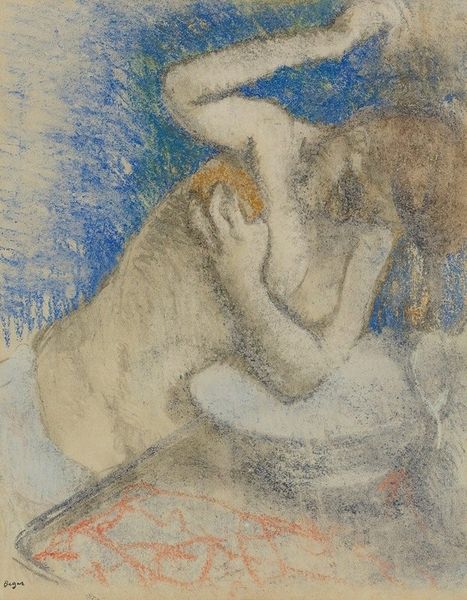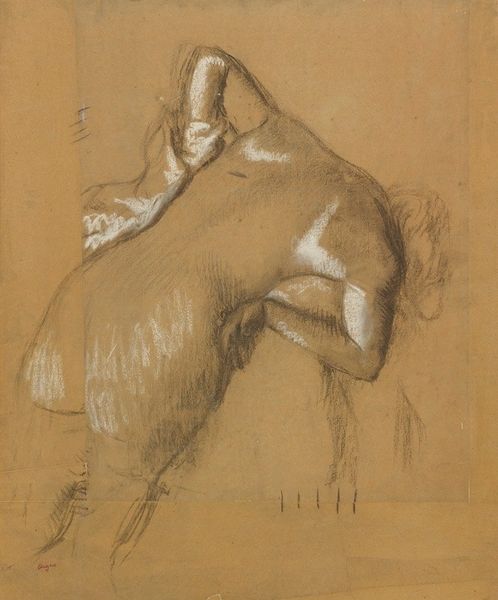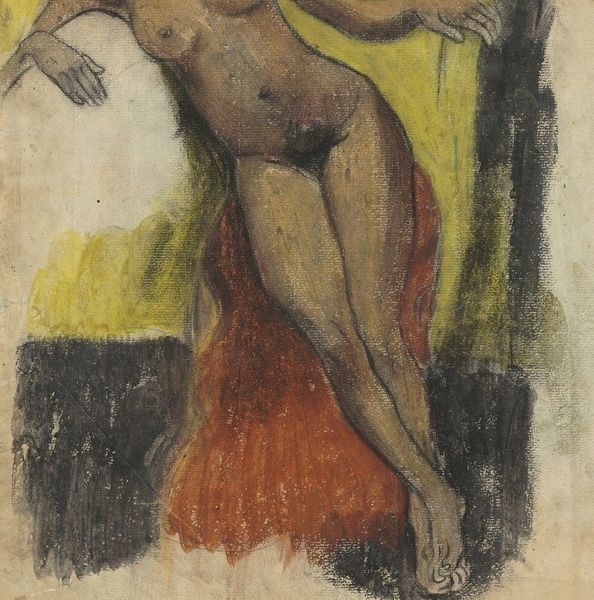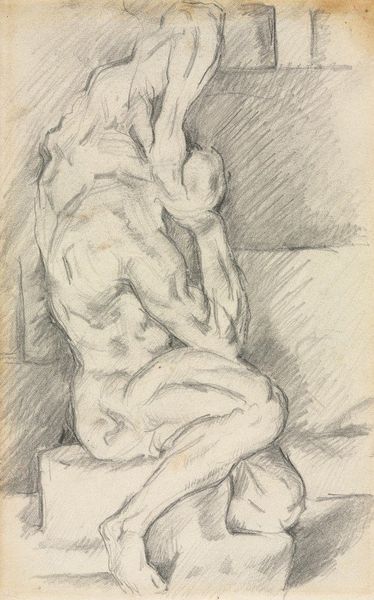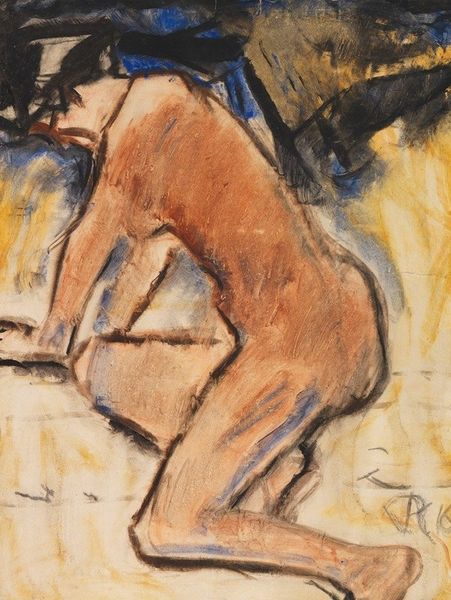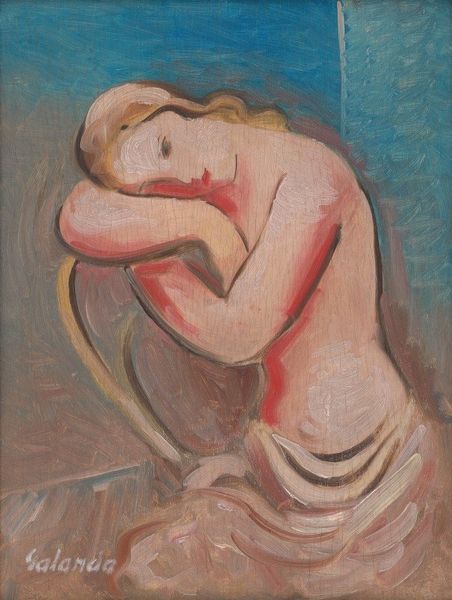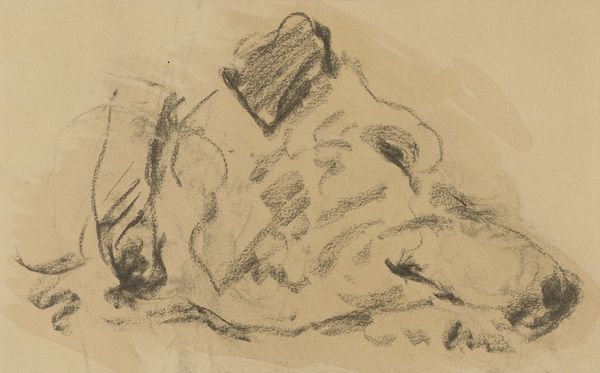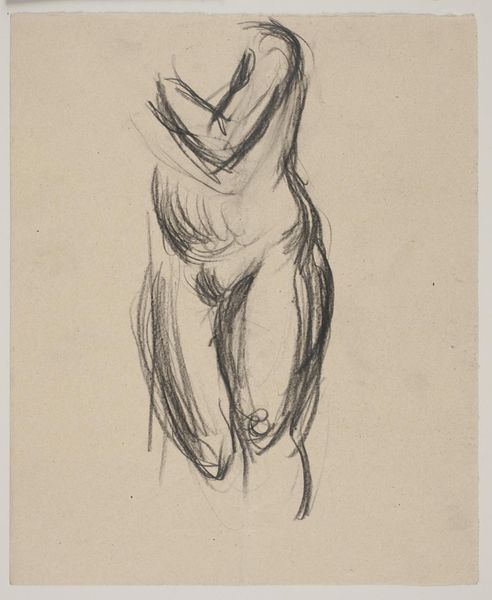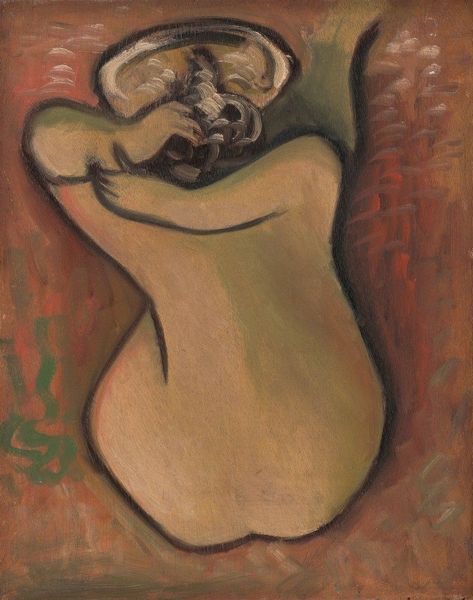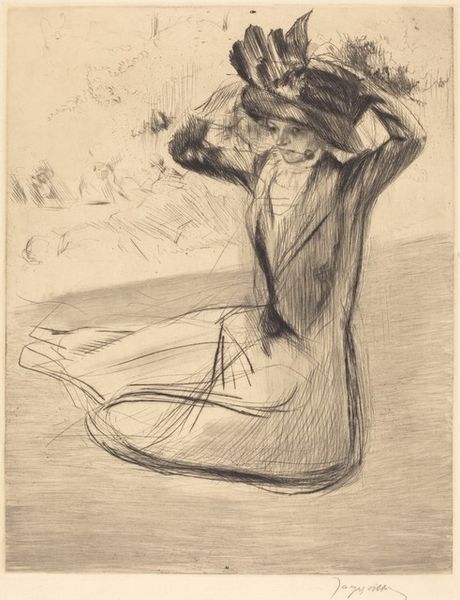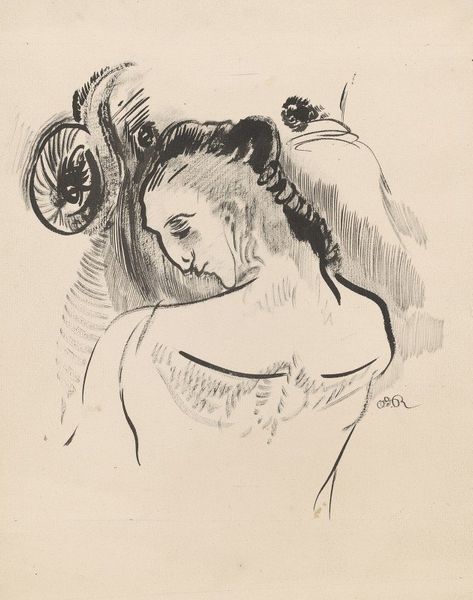
drawing, dry-media, charcoal, pastel
#
portrait
#
drawing
#
impressionism
#
charcoal drawing
#
figuration
#
dry-media
#
oil painting
#
intimism
#
portrait drawing
#
charcoal
#
pastel
#
nude
Copyright: Public Domain: Artvee
Editor: This is Edgar Degas’s "Femme Se Peignant," created between 1889 and 1892, using charcoal and pastel. It's so intimate, almost voyeuristic, and quite different from some of his ballet scenes. What jumps out at you when you look at this piece? Curator: The intimacy you note is key. Consider the public's fascination with private moments. Degas is offering a glimpse into a woman's personal space, at a time when the gaze upon women was largely controlled and sanitized by social conventions and, indeed, the male dominated art world. Does this break free from traditional portrayal of the female nude, and if so how? Editor: I think so, definitely. Unlike academic nudes, this doesn’t seem posed for the viewer. She's caught up in her own routine, oblivious to our presence. It feels more real. Curator: Exactly! The "real" is a critical concept here. Impressionists like Degas were trying to capture fleeting moments and experiences, but this work goes beyond that. It questions the performative nature of art itself. This intimate, almost accidental composition subverts expectations, challenges established academic traditions, and provokes new visual languages in painting. The rise of Impressionism coincided with evolving ideas of modernity: what part does this artwork plays in that socio-cultural context? Editor: So, it's not just about showing us something pretty, but about challenging our ideas about beauty and how women are portrayed? Curator: Precisely! It pushes boundaries. How images of women circulate within broader cultural frameworks. Editor: This gives me so much to think about. Seeing it that way makes it far more powerful. Curator: It encourages questioning how we view art, and what expectations and social constructs affect these perceptions. It's always more than just an image.
Comments
No comments
Be the first to comment and join the conversation on the ultimate creative platform.
